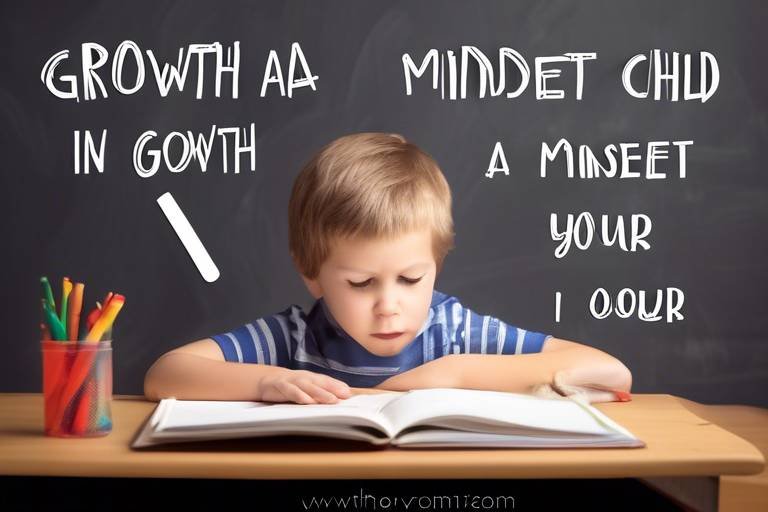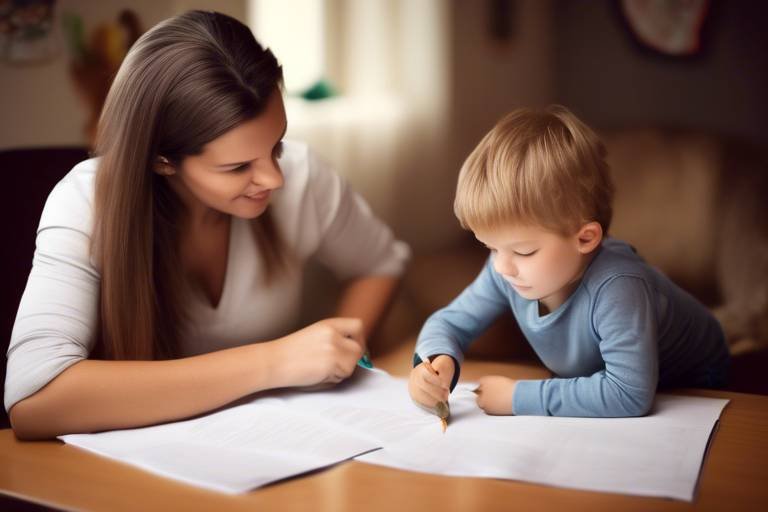Addressing Your Child's Social Media Habits
In today's digital age, social media isn't just a trend; it's a significant part of our children's lives. As parents, it’s crucial to understand the landscape of social media and its implications on our kids. The platforms they frequent can shape their friendships, influence their self-esteem, and even alter their worldview. Are you feeling overwhelmed by the thought of navigating this complex terrain? You're not alone! Many parents share your concerns, and this article aims to equip you with the knowledge and strategies to help your child use social media responsibly and safely.
Social media can be a double-edged sword. On one hand, it offers a space for creativity, connection, and learning. On the other, it can expose children to cyberbullying, misinformation, and unrealistic comparisons. The question is, how do we strike a balance? By actively engaging with our children about their online habits, we can foster a healthy relationship with technology. Think of it as teaching them to ride a bike; they need guidance and support, but ultimately, they have to learn to balance on their own.
To effectively address your child’s social media habits, we need to dive deep into understanding its influence, setting boundaries, monitoring activity, and encouraging positive behaviors. This journey requires open communication and a willingness to adapt as children grow and technology evolves. So, let’s explore how we can navigate this digital landscape together!
Social media platforms significantly shape children's social interactions and self-perception. Recognizing these influences can help parents address potential challenges and promote healthy online behavior. The reality is, social media can create a false sense of reality. Children may see curated snapshots of others' lives and feel inadequate by comparison. It's vital for parents to discuss these feelings openly and help children understand that what they see online is often just the highlight reel, not the full story.
Establishing clear boundaries around social media use is essential. Parents should create guidelines that not only foster responsible usage but also respect children's autonomy. It's similar to setting curfews for bedtime; it provides structure while allowing kids to feel a sense of freedom. Discussing screen time limits, appropriate content, and acceptable online interactions can help create a safer digital environment.
Developing a family social media policy encourages open communication about online behavior. This policy should reflect your family values and expectations. Think of it as a roadmap for navigating social media together. Include aspects like:
- Time limits for usage
- Types of content that are acceptable
- Consequences for inappropriate behavior
Engaging children in policy creation fosters a sense of ownership and responsibility. When kids feel they have a say in the rules, they are more likely to adhere to them. This collaborative approach can also lead to valuable discussions about the reasons behind certain guidelines, making them more meaningful.
Regularly reviewing and updating the social media policy ensures it remains relevant. Just like fashion trends, social media evolves rapidly. What was acceptable a year ago may not be today. This ongoing dialogue allows parents and children to adapt together, ensuring that the rules grow with them.
Monitoring your child's online activity is crucial for ensuring their safety. This doesn’t mean invading their privacy but rather finding a balance between supervision and trust. Tools like parental controls can assist in this process, but open conversations about what they encounter online are equally important. Ask them about their favorite platforms, who they interact with, and what content they enjoy. This not only keeps you informed but also shows your child that you care about their online experience.
Promoting positive online interactions helps children develop healthy relationships. It's essential to instill values of empathy, respect, and kindness in their digital communications. Remind them that behind every profile is a real person with feelings. Encouraging them to think before they post can lead to more thoughtful interactions.
Parents play a vital role in shaping their children's online behavior. Kids learn by example, so showcasing appropriate social media habits is key. Share your own experiences and discuss how you navigate online challenges. This transparency can help demystify social media and make it less intimidating for them.
Identifying warning signs of unhealthy social media use is essential. Parents should be vigilant for changes in behavior, such as increased secrecy, withdrawal from family activities, or sudden changes in mood. If you notice these red flags, it’s time for a heart-to-heart conversation. Addressing these issues early can prevent more significant problems down the road.
Q: How can I start a conversation about social media with my child?
A: Begin by asking them about their favorite platforms and what they enjoy about them. Share your own experiences and concerns to create an open dialogue.
Q: What age is appropriate for my child to start using social media?
A: While there’s no one-size-fits-all answer, many platforms require users to be at least 13 years old. Consider your child's maturity level and ability to handle online interactions.
Q: How can I ensure my child’s safety online?
A: Establish clear guidelines, monitor their activity, and encourage open communication about their online experiences. Regularly review the family social media policy together.

Understanding Social Media's Influence
In today's digital age, social media platforms have become a cornerstone of children's social interactions and self-perception. It's hard to ignore the fact that these platforms shape how kids communicate, form friendships, and even view themselves. Think about it: when was the last time you saw a child without a smartphone glued to their hand? Social media isn't just a pastime; it's a significant part of their daily lives, influencing everything from their mood to their self-esteem.
Children and teenagers are particularly vulnerable to the effects of social media. They are at a stage where they are still developing their identities and are highly impressionable. The constant barrage of curated images, likes, and comments can lead to unrealistic expectations and comparisons. When they see friends or influencers posting their "perfect" lives, it can create feelings of inadequacy and anxiety. In fact, studies have shown that excessive social media use is linked to increased rates of depression and anxiety among young people.
Moreover, social media can also impact children's social skills. While it offers a platform for connection, it can sometimes hinder face-to-face interactions. Kids may find it easier to communicate through screens, leading to a decline in their ability to engage in real-world conversations. This phenomenon can create a paradox: they may have hundreds of online friends but feel lonely in their offline lives. It's essential for parents to recognize this duality and understand the implications it has on their children's overall well-being.
To navigate these complexities, parents need to be proactive in discussing social media's influence with their children. Open conversations can help kids articulate their feelings and experiences online. By acknowledging the pressures they face, parents can create a safe space for their children to express concerns, whether it's about cyberbullying or the pressure to conform to certain standards. This dialogue can serve as a foundation for building resilience and critical thinking skills, empowering children to make informed choices about their online presence.
In summary, understanding social media's influence is not just about recognizing its potential dangers; it's also about appreciating its role in your child's life. By fostering an environment of open communication and awareness, parents can help their children navigate the digital landscape responsibly. The goal isn't to eliminate social media from their lives but to equip them with the tools necessary to use it wisely and positively.

Setting Boundaries for Usage
In today's digital age, where social media is as ubiquitous as the air we breathe, setting boundaries for your child's usage is not just a good idea—it's essential. Think of it like teaching them to swim; you wouldn't just toss them into the deep end without a life jacket, right? Similarly, establishing clear guidelines helps ensure that your child navigates the often tumultuous waters of social media safely and responsibly. Parents often wonder how to strike the right balance between allowing freedom and ensuring safety. The key is to create a framework that respects your child's autonomy while providing the necessary guidance.
First and foremost, it's important to have an open dialogue with your child about why boundaries matter. Explain that these rules aren't about control but rather about fostering a safe online environment. You can start by discussing the potential pitfalls of social media, such as cyberbullying, privacy issues, and the impact of negative comparisons. This conversation can help them understand that you're not just being overprotective; you genuinely care about their well-being.
Next, consider implementing a screen time schedule. This can be a simple agreement regarding when and how long your child can use social media each day. For example, you might agree on two hours of social media time after homework is completed. This not only encourages responsibility but also ensures that they are prioritizing their offline obligations. You could even create a visual chart to track their usage, which can be a fun way for them to engage with the rules. Here's a sample table that outlines a possible weekly schedule:
| Day | Allowed Social Media Time | Activities to Complete First |
|---|---|---|
| Monday | 2 hours | Homework, Chores |
| Tuesday | 2 hours | Sports Practice |
| Wednesday | 1 hour | Reading, Family Time |
| Thursday | 2 hours | Homework, Chores |
| Friday | 3 hours | Free Day |
| Saturday | 3 hours | Outdoor Activities |
| Sunday | 1 hour | Preparation for the Week |
Another effective strategy is to establish content guidelines. Discuss the types of content that are appropriate and what should be avoided. For instance, you might agree that they can share photos and updates about their life but should refrain from posting anything that could be considered offensive or inappropriate. Creating a list of "dos and don'ts" can serve as a quick reference for your child, helping them make better choices when using social media.
Finally, remember that boundaries should be flexible. As your child grows and technology evolves, it's vital to revisit and adjust your guidelines. Regular check-ins can help facilitate this. Ask your child how they feel about the rules and if they think any changes are needed. This not only helps them feel heard but also teaches them the importance of adapting to new situations.
By setting clear boundaries for social media usage, you empower your child to navigate the digital landscape with confidence. It's like giving them a compass; they may not always follow the path you set, but they'll have a guide to help them find their way. So, take a deep breath, have those conversations, and watch as your child learns to balance their online and offline worlds responsibly!
- How can I start the conversation about social media boundaries with my child? Begin by expressing your concerns and the importance of safety. Make it a two-way conversation where they can share their thoughts as well.
- What if my child pushes back against the boundaries I set? It's normal for children to test limits. Stay calm, listen to their perspective, and be willing to negotiate while reinforcing the need for guidelines.
- How often should I review the social media policy? Aim to review it at least every few months or whenever significant changes occur in your child's life or in the social media landscape.

Creating a Family Social Media Policy
Creating a family social media policy is not just a good idea; it’s a vital step toward ensuring that your children navigate the digital world safely and responsibly. Think of it as a roadmap that guides your family through the often murky waters of social media. It’s essential to involve everyone in your household in this process, as a collaborative approach fosters a sense of ownership and accountability among children. By discussing your family values and expectations regarding social media, you can create a policy that resonates with everyone.
Start by holding a family meeting where everyone can share their thoughts and concerns about social media. This open dialogue can unveil various perspectives and help you understand what your children are experiencing online. Ask questions like, “What do you enjoy about social media?” or “What worries you about it?” This not only provides insight into their feelings but also encourages them to think critically about their online interactions.
Once you’ve gathered everyone’s input, it’s time to outline the key components of your social media policy. Here are some important elements to consider:
- Time Limits: Specify how much time each family member can spend on social media daily or weekly. This helps prevent excessive use.
- Privacy Settings: Discuss the importance of keeping profiles private and the need to review privacy settings regularly.
- Content Sharing: Set guidelines on what types of content are appropriate to share online, including photos and personal information.
- Respectful Communication: Emphasize the importance of treating others with kindness and respect, both in comments and direct messages.
- Reporting Issues: Encourage your children to come to you if they encounter anything uncomfortable or concerning online.
It’s crucial that this policy is not set in stone. As technology evolves and your children grow, so too should your guidelines. Regularly revisiting the policy keeps it relevant and allows for adjustments based on new challenges or experiences. Schedule periodic family discussions to review the policy and make necessary changes, ensuring that your children feel heard and valued in the process.
Involving your children in the creation of this policy not only empowers them but also strengthens family bonds. They’ll appreciate having a say in the rules that govern their online lives, which can lead to more responsible behavior. Remember, the goal of this policy is not to create a rigid set of rules but to foster an environment of trust and open communication. This way, your children will feel comfortable approaching you with any issues they face online, knowing that you’re there to support them.
In summary, a family social media policy is a living document that requires participation, flexibility, and regular updates. By creating it together, you not only set clear expectations but also build a foundation of trust that encourages healthy online habits. So gather your family, start the conversation, and pave the way for a safer social media experience!
Q1: How often should we review our family social media policy?
A1: It's a good idea to review your family social media policy at least once every few months or whenever a significant change occurs, such as a new platform becoming popular or a child reaching a new developmental stage.
Q2: What should we do if a child breaks the social media rules?
A2: Address the issue calmly and discuss the reasons behind the rule. Use it as a learning opportunity to reinforce the importance of the policy and adjust consequences as necessary.
Q3: Can we include social media usage in our family meetings?
A3: Absolutely! Regular family meetings are a great way to discuss social media usage, share experiences, and make any necessary adjustments to your policy.

Involving Children in the Process
Involving children in the creation of a family social media policy is not just a good idea; it's a game changer. When children feel like they have a voice in the decision-making process, they are more likely to take ownership of their online behavior. Imagine trying to convince a child to follow rules that seem arbitrary to them. It’s like asking a cat to fetch; it just doesn’t work that way! By including your kids in discussions about social media, you’re not only empowering them but also opening the door for meaningful conversations about the responsibilities that come with digital interaction.
Start by having a family meeting where everyone can express their thoughts and feelings about social media. Ask questions like, “What do you think is important when using social media?” or “How do you feel about the time spent online?” These questions can spark an engaging dialogue and help you understand their perspective. You might be surprised by their insights; after all, they are the ones navigating these platforms daily!
As you work together to outline the guidelines, consider creating a list of dos and don’ts that reflect your family’s values. This list can include things like:
- Respecting others' privacy.
- Thinking before posting.
- Reporting inappropriate content.
By collaborating on these rules, children are more likely to feel a sense of responsibility towards them. They will understand that these guidelines are not just restrictions but are there to protect them and foster a healthy online environment.
Moreover, it’s essential to revisit these discussions regularly. As children grow and technology evolves, their needs and the challenges they face online will change. This ongoing dialogue not only keeps the policy relevant but also reinforces the idea that their opinions matter. It’s like gardening; you can’t just plant the seeds and walk away. You need to nurture them to see them thrive!

Reviewing and Revising the Policy
As your child grows and the digital landscape continues to evolve, it becomes increasingly important to regularly review and revise the family social media policy. This isn't just a one-time task that you can check off your list; it’s an ongoing conversation that needs to adapt to new challenges and opportunities. Think of it as a living document that grows alongside your child. Just like how you wouldn’t wear the same clothes you wore a decade ago, your social media guidelines need to be updated to reflect the current realities of online interactions.
When you sit down to review the policy, consider engaging your child in the process. Ask them what they think about the existing rules and if they feel they are fair. This not only empowers them but also opens the door to discussions about their experiences online. You might be surprised by what they share! For instance, they may have encountered new platforms that you haven't even heard of yet, or they might have a different perspective on privacy that could lead to a valuable conversation.
Here are a few key points to consider when revising your social media policy:
- Assess Current Usage: Take a moment to look at how your child is using social media. Are they spending more time on certain platforms? Are they engaging in different types of interactions? Understanding their current behavior can guide necessary adjustments.
- Incorporate New Trends: Social media is always changing. New apps emerge, and trends shift rapidly. Make sure your policy addresses these changes, especially if they seem to promote behaviors that could be harmful.
- Set New Goals: As children mature, their needs and challenges change. You might want to introduce new goals, such as encouraging them to engage in positive online communities or to limit time spent on social media as they focus on schoolwork.
Additionally, it’s vital to create a routine for these reviews. Perhaps you could set aside time every few months or at the start of each school year. This way, it becomes a natural part of your family’s digital life, rather than a sporadic event that feels forced. With each review, celebrate the positive behaviors your child has exhibited online, reinforcing the idea that responsible digital citizenship is something to be proud of.
Ultimately, the goal is to foster a safe and respectful online environment for your child. By regularly reviewing and revising your social media policy, you not only protect them but also teach them the importance of adaptability and responsibility in the digital world.
- How often should we review our family social media policy? It's recommended to review your policy at least every few months or whenever significant changes occur in your child's online behavior or the platforms they use.
- What should we do if our child disagrees with the policy? Encourage open dialogue. Listen to their concerns and be willing to adjust the policy if it aligns with your family values while ensuring safety.
- Can I monitor my child's social media without invading their privacy? Yes, monitoring can be done respectfully. Use tools that allow you to check in on their activity while also encouraging them to share their experiences with you.

Monitoring Online Activity
In today's digital age, monitoring your child's online activity has become more crucial than ever. With social media platforms acting as a double-edged sword, they can foster connections and creativity while also exposing children to various risks. Parents often find themselves in a tricky position, wanting to ensure their child's safety without invading their privacy. So, how can you strike that delicate balance? Here are some effective strategies to consider.
First and foremost, it's essential to establish open lines of communication. Talk to your child about the importance of online safety and the potential dangers that lurk in the digital world. Make it clear that your intention is not to spy but to protect them. This approach fosters trust and can lead to more honest discussions about their online experiences. It’s like being a lifeguard at a pool; you’re not there to ruin their fun, but to ensure they don’t get into deep waters without knowing how to swim.
Next, consider using parental control tools. These tools can help you monitor your child's social media interactions without being intrusive. You can track their usage patterns, see who they’re interacting with, and even set time limits for app usage. Here’s a simple table that outlines some popular parental control apps:
| App Name | Features | Cost |
|---|---|---|
| Net Nanny | Web filtering, time management, social media monitoring | Starting at $39.99/year |
| Qustodio | Activity monitoring, location tracking, app blocking | Free version available; Premium starts at $54.95/year |
| FamilyTime | Screen time limits, geo-fencing, app blocker | Starting at $27/month |
While these tools are helpful, they should not replace direct conversations with your child. It's important to regularly check in with them about their online experiences. Ask questions like, “What do you enjoy most about social media?” or “Have you encountered anything online that made you uncomfortable?” These questions not only show your interest but also help you gauge their emotional well-being in the digital landscape.
Another effective strategy is to set specific rules for social media use. For example, you might decide that certain apps are off-limits until your child reaches a certain age or that all online interactions must be conducted with privacy settings enabled. Remember, rules should be clear and consistent, much like the rules of a game. This structure helps children understand expectations and the consequences of their actions.
Lastly, be aware of the signs that your child may be struggling with their online activity. Look out for sudden changes in mood, withdrawal from family activities, or secrecy about their phone or computer use. If you notice any of these red flags, it’s crucial to address them promptly. You might need to have a more serious conversation about their online behavior and the importance of maintaining a healthy digital life.
In conclusion, monitoring your child's online activity is not just about keeping tabs; it's about creating a safe space for them to explore the digital world. By fostering open communication, utilizing parental controls, setting clear rules, and being vigilant for warning signs, you can help your child navigate social media responsibly. Remember, you’re their guide in this vast online ocean, steering them towards safe shores.
- How much monitoring is too much? It's important to find a balance. You want to be aware of their online activity without making them feel like they're under constant surveillance.
- What should I do if I find inappropriate content? Approach the situation calmly, discuss why the content is inappropriate, and reinforce the importance of safe online behavior.
- How can I encourage my child to come to me with problems? Create a non-judgmental environment where they feel safe sharing their experiences. Regular check-ins can help maintain this open dialogue.

Encouraging Positive Online Behavior
In today's digital age, encouraging positive online behavior among children is more crucial than ever. As children navigate through various social media platforms, they encounter a multitude of interactions that can shape their social skills and emotional intelligence. So, how can parents ensure that their children are not just passive consumers of content but active participants in creating a respectful and kind online community? The answer lies in fostering an environment where empathy, respect, and kindness are not just encouraged but are fundamental values.
One effective way to promote positive online interactions is by having open discussions about the importance of digital etiquette. Talk to your children about what it means to be respectful online, just as they would in face-to-face interactions. This includes understanding that behind every profile is a real person with feelings. Encourage them to think twice before posting comments or sharing content that could hurt someone else's feelings. To illustrate this point, you might ask them how they would feel if someone said the same thing to them in person. This kind of reflection can help them develop a sense of empathy that translates into their online behavior.
Additionally, parents should consider modeling appropriate behavior. Children often mimic their parents' actions, and this extends to their online habits. If they see you engaging positively on social media—sharing uplifting content, respecting differing opinions, and treating others with kindness—they are more likely to adopt similar behaviors. It's essential to demonstrate that social media can be a platform for constructive conversations and positive interactions.
Another vital aspect of encouraging positive online behavior is teaching children to recognize and respond to negativity. Equip them with the skills to identify toxic behavior online—whether it's cyberbullying, trolling, or spreading misinformation. Discuss strategies for handling these situations, such as reporting harmful content or disengaging from negative interactions. By doing so, you empower them to take control of their online experiences and foster a healthier digital environment.
Moreover, creating a safe space for communication is essential. Encourage your children to come to you with any concerns they may have about their online experiences. By establishing a trusting relationship, they will feel comfortable discussing any issues they encounter, whether it's a troubling interaction or peer pressure to engage in negative behavior. This open line of communication can be the difference between a child feeling isolated and one who feels supported.
Finally, consider incorporating family activities that promote positive online behavior. For example, you could have a family movie night where you watch films that highlight the importance of kindness and empathy. Afterward, engage in discussions about the characters' actions and how they relate to real-life situations. This not only strengthens family bonds but also reinforces the values you wish to instill in your children.
In summary, encouraging positive online behavior is not a one-time conversation but an ongoing process. By engaging in discussions, modeling appropriate behavior, teaching children to recognize negativity, and fostering open communication, parents can significantly influence their children's online interactions. Remember, the digital world can be a wonderful place filled with opportunities for connection and learning, and it's our job to ensure that our children navigate it with kindness and respect.
- How can I talk to my child about online behavior without sounding preachy?
Approach the conversation as a discussion rather than a lecture. Ask open-ended questions and listen to their thoughts and feelings. - What are some signs that my child may be experiencing negative online interactions?
Look for changes in behavior, such as withdrawal from social activities, sudden changes in mood, or reluctance to use their devices. - How can I encourage my child to report negative behavior they encounter online?
Reassure them that it's safe to report any negative behavior and explain that they will not get in trouble for speaking up.

Modeling Appropriate Behavior
As parents, we often find ourselves in the role of a mirror, reflecting the behaviors and attitudes we wish to see in our children. When it comes to social media, this reflection is more important than ever. Children are keen observers, and they learn not just from what we say, but from what we do. If we want our kids to engage positively online, we need to model appropriate behavior ourselves. This means being mindful of our own social media interactions, demonstrating respect and kindness, and practicing healthy digital habits.
Think about it: Have you ever noticed how your mood shifts when scrolling through social media? Are you quick to react or share without thinking? If you find yourself engaging in negative behaviors online, it’s likely your children will pick up on those habits. Instead, let’s aim to create a positive online environment. This can be achieved by:
- Practicing Empathy: Show your children how to understand others' feelings by commenting positively on posts, sharing uplifting content, and supporting friends in need.
- Being Respectful: Teach them the importance of treating others with respect, even when disagreements arise. Avoid engaging in online arguments or making hurtful comments.
- Setting Time Limits: Demonstrate a balanced approach to social media by limiting your own usage. This sets a precedent that encourages moderation and mindfulness.
Moreover, it’s essential to discuss the content you share. Are you posting things that align with your family values? Are you cautious about sharing sensitive information? By openly discussing these topics with your children, you can guide them to understand the implications of their online presence. This conversation can be a great opportunity to explore the idea of a digital footprint—how everything shared online can linger and impact future opportunities.
Additionally, consider the significance of privacy settings and online safety. By actively managing your own privacy settings and discussing the importance of these measures with your children, you can foster a culture of safety and awareness. This proactive approach not only protects your family but also instills a sense of responsibility in your children as they navigate their own online spaces.
Finally, remember that it’s not just about what you do online; it’s also about how you respond to the online behavior of others. If you encounter negativity or bullying, demonstrate how to handle it gracefully. Show your children that they can stand up for themselves and others without resorting to hostility. This is the essence of modeling appropriate behavior—teaching them that the digital world can be a place of connection and support, rather than conflict and division.
- How can I start modeling appropriate behavior on social media? Begin by being mindful of your own interactions online. Share positive content, engage respectfully, and discuss your social media habits with your children.
- What if my child is already exhibiting negative behaviors online? Address the issue openly by discussing the specific behaviors you’ve observed. Use this as an opportunity to explore the reasons behind their actions and guide them towards more positive practices.
- How can I encourage my child to speak up against negativity online? Teach them the importance of standing up for themselves and others. Role-play different scenarios and discuss appropriate responses to online bullying or negative comments.

Recognizing Red Flags
In the vast landscape of social media, it’s crucial for parents to be vigilant and recognize the red flags that may indicate unhealthy online behavior in their children. Just like a gardener watches for weeds that can choke the life out of their plants, parents must keep an eye out for signs that their child's social media habits might be going awry. These warning signs can manifest in various ways, often subtly at first, but they can escalate if not addressed promptly.
One of the most significant indicators is a sudden change in mood or behavior. If your child, who once eagerly shared their day with you, suddenly becomes withdrawn or secretive about their online activities, it’s time to investigate further. Emotional shifts can be a clear sign that something is bothering them, possibly related to their interactions on social media. Are they experiencing cyberbullying or feeling pressured to conform to unrealistic standards? These are serious concerns that deserve immediate attention.
Another red flag to watch for is excessive screen time. While technology is a part of our lives, if your child is spending more hours online than they are interacting with family or engaging in physical activities, it could indicate an unhealthy obsession. Ask yourself, is their social media use interfering with homework, sleep, or family time? If the answer is yes, it might be time to set some boundaries.
Additionally, monitoring their interactions can provide insight into their online world. If you notice that your child is frequently interacting with strangers or sharing personal information with people they barely know, it raises a significant safety concern. It’s essential to have open conversations about who they are talking to online and what information they are sharing. You can even create a list of trusted contacts that they can communicate with, ensuring they feel secure while navigating their digital space.
Lastly, keep an eye out for changes in their interests or social circles. If your child starts to distance themselves from friends they once cherished or becomes obsessed with a particular online persona, it might be a sign of unhealthy influence. Encourage them to talk about their online experiences, and don’t shy away from discussing the potential dangers of idolizing influencers who promote unrealistic lifestyles.
In summary, being proactive and observant can make a world of difference in recognizing these red flags. By maintaining an open dialogue with your child, you can help them navigate the complexities of social media while ensuring their emotional and mental well-being remain intact. Remember, it’s not about policing their every move but rather guiding them to make informed and safe choices in their online interactions.
- What are the common signs of unhealthy social media use? Look for changes in mood, excessive screen time, secretive behavior, and distancing from friends.
- How can I talk to my child about social media? Approach the conversation with curiosity and openness. Ask them about their online experiences and listen without judgment.
- What should I do if I notice red flags? Have an honest conversation with your child about your concerns and work together to establish healthier online habits.
Frequently Asked Questions
- What is the impact of social media on my child's social interactions?
Social media can significantly influence how children interact with their peers. It shapes their communication styles, self-esteem, and even their perception of friendships. By understanding these effects, parents can better guide their children in developing healthy relationships both online and offline.
- How can I set effective boundaries for my child's social media usage?
Establishing clear guidelines is key! Sit down with your child and discuss what you think is appropriate. Consider factors like daily screen time limits, the types of platforms they can use, and privacy settings. It's all about creating a balance that respects their autonomy while ensuring their safety.
- What should be included in a family social media policy?
A family social media policy should reflect your family's values and expectations regarding online behavior. Include rules about what is acceptable to share, guidelines for interacting with others, and consequences for breaking the rules. Make it a collaborative effort by involving your child in the discussion!
- How often should we review and update our social media policy?
Regular reviews are essential! As your child grows and technology changes, so should your guidelines. Aim to revisit the policy every few months or whenever you notice changes in your child's online behavior or new trends in social media.
- What are some effective ways to monitor my child's online activity?
Monitoring can be tricky, but it’s crucial for safety. Use parental control apps, keep devices in shared spaces, and have open conversations about their online activities. The goal is to supervise without invading their privacy, so maintain a balance that fosters trust.
- How can I encourage positive online behavior in my child?
Modeling appropriate behavior is vital! Show your child how to communicate respectfully and kindly online. Encourage them to think before they post and to treat others as they would like to be treated. Positive reinforcement can go a long way in shaping their online interactions.
- What are the red flags of unhealthy social media use?
Watch for signs like excessive screen time, withdrawal from real-life interactions, or changes in mood when discussing social media. If you notice these behaviors, it’s crucial to address them promptly and have an open conversation about their online experiences.



















